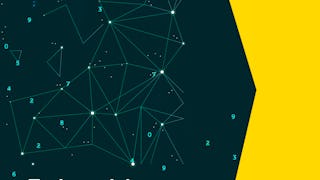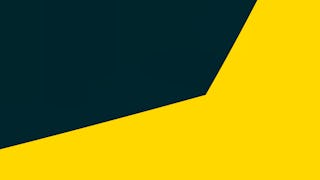This course provides an introduction to econometrics, focusing on its scope, foundational concepts, and practical applications in analyzing economic relationships. Learners will begin by exploring the distinctions between economic models and econometric models, gaining an understanding of how theory and data intersect in empirical research. The course introduces regression analysis, starting with simple linear regression involving one dependent and one independent variable, enabling students to examine the nature and strength of relationships between economic variables.

Unlock access to 10,000+ courses with Coursera Plus. Start 7-Day free trial.


Recommended experience
What you'll learn
Master the policy-making process, analyzing policy issues and stakeholder interests. Gain skills to assess policies and contribute to their creation.
Skills you'll gain
Details to know

Add to your LinkedIn profile
September 2025
27 assignments
See how employees at top companies are mastering in-demand skills

There are 7 modules in this course
In this module, you will learn about the scope of econometrics, economic models, and econometric models. You will then be introduced to regression analysis between one dependent variable and one independent variable. Further, you will revise the concepts of individual, conditional, and joint distributions and the concept of variable independence. Later, you will learn how to identify relationships between two variables. And lastly, you will explore the general nature of the linear regression model.
What's included
10 videos2 readings3 assignments
In this module, you will learn about the theory and practice of simple linear regression with one dependent variable and one independent variable. Simple linear regression is a statistical method that allows us to summarize and study relationships between two variables and goes beyond exploring the simple correlation between them. You will first learn the estimation and interpretation of the estimators of a regression model. Then, you will be able to understand those estimators’ numerical and statistical properties. Lastly, you will work with some practical, functional forms to handle nonlinearities in regression models.
What's included
11 videos2 readings3 assignments
In this module, you will move from the simple linear regression model with one regressor to the multiple linear regression model with two or more regressors. We use the adjective “simple” to denote that a model has only one regressor and the adjective “multiple” to indicate that a model has at least two regressors. In learning the practice of multiple linear regression, importance is accorded to building an intuitive understanding without using matrix algebra, mainly by analogy with simple linear regression. Lastly, you can derive and learn the algebraic properties of a regression model with k explanatory variables.
What's included
10 videos2 readings3 assignments
In this module, you will continue with the multiple linear regression model and use that to learn statistical inference, allowing you to infer something about the population model from a random sample. The sixth assumption of the classical linear model is the additional assumption that the population error is normally distributed. In the model, you will understand the sample distributions of the OLS estimators. Further, you will be able to review how to carry out a hypothesis test, assuming the six assumptions are true. You will also be able to do several specifications of hypothesis testing, including restrictions on a single parameter, a combination of two parameters, exclusion restrictions, tests of overall significance, and multiple linear restrictions. To conclude, you will be using the t-statistic and F-statistic.
What's included
12 videos4 readings5 assignments
In this module, you will continue with the multiple linear regression model and explore the asymptotic properties of the OLS estimators, which holds true when you transition from a small sample to a large sample. These properties are also known as the large sample properties. Post OLS asymptotics, you will learn about some extensions of the linear regression model, which are mostly used in applied work. You will further explore regression models, which are three different functional forms of explanatory models. Starting with the case when you have quadratic terms of the explanatory variable, you will discuss regression models with categorical explanatory variables. Finally, you will understand the regression models involving the interaction of explanatory variables as regressors.
What's included
8 videos4 readings5 assignments
In this module, you will keep using the multiple linear regression model and analyze the standard linear regression model considering the three problems that crop up most frequently when analyzing cross-sectional data. You will learn, in particular, about the bias and inconsistency arising from omitting important variables, as well as the effects of multicollinearity and heteroscedasticity in your data. You will also learn how to identify multicollinearity and heteroscedasticity in your model, test for it, and correct it using various techniques.
What's included
8 videos3 readings4 assignments
In this module, you will learn about data and specification errors commonly encountered in multiple linear models. You will also learn about the tests to check for model misspecification, using proxy as a possible solution for model misspecification. Further, you will be introduced to issues that crop due to measurement error in the dependent and independent variables. You will also gain an understanding of two advanced models. First is the binary response model, which is used when the dependent variable is binary in nature. Next, you will learn about the time series model. You will also get some insights into the problem of autocorrelation, which is usually encountered when we have specification errors in time series data.
What's included
11 videos3 readings4 assignments
Build toward a degree
This course is part of the following degree program(s) offered by O.P. Jindal Global University. If you are admitted and enroll, your completed coursework may count toward your degree learning and your progress can transfer with you.¹
Instructor

Offered by
Explore more from Economics
 Status: Free
Status: FreeErasmus University Rotterdam
 Status: Preview
Status: PreviewErasmus University Rotterdam
 Status: Preview
Status: PreviewO.P. Jindal Global University
 Status: Free Trial
Status: Free TrialRice University
Why people choose Coursera for their career





Open new doors with Coursera Plus
Unlimited access to 10,000+ world-class courses, hands-on projects, and job-ready certificate programs - all included in your subscription
Advance your career with an online degree
Earn a degree from world-class universities - 100% online
Join over 3,400 global companies that choose Coursera for Business
Upskill your employees to excel in the digital economy
Frequently asked questions
To access the course materials, assignments and to earn a Certificate, you will need to purchase the Certificate experience when you enroll in a course. You can try a Free Trial instead, or apply for Financial Aid. The course may offer 'Full Course, No Certificate' instead. This option lets you see all course materials, submit required assessments, and get a final grade. This also means that you will not be able to purchase a Certificate experience.
When you purchase a Certificate you get access to all course materials, including graded assignments. Upon completing the course, your electronic Certificate will be added to your Accomplishments page - from there, you can print your Certificate or add it to your LinkedIn profile.
Yes. In select learning programs, you can apply for financial aid or a scholarship if you can’t afford the enrollment fee. If fin aid or scholarship is available for your learning program selection, you’ll find a link to apply on the description page.
More questions
Financial aid available,

